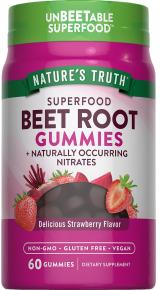The menu looks familiar enough.
But the soup, served lukewarm, is made of ground sesame seeds and pureed vegetables. The chilled quiche contains uncooked walnuts, mushrooms, herbs, and flaxseed. And the “whipped cream” is cashews and orange juice. Even stranger, none of these ingredients has been heated much above body temperature—everything, from appetizer to dessert, is raw!
“Living” Foods
Welcome to the world of raw cuisine—“living” foods that, according to their advocates, increase energy, improve skin texture, aid digestion, encourage weight loss, reduce the risk of heart disease, and improve overall health. Actors Woody Harrelson and Demi Moore, model Carol Alt, fashion designer Donna Karan, and musician Sting have helped to promote raw diets. What are they eating? Organically grown fruits, vegetables, nuts, seeds, grains, and legumes, none of which are heated above 115° to 118° Fahrenheit. Instead, these ingredients are soaked, sprouted, juiced, fermented, dehydrated, blended, chopped, and artfully arranged.
Everyone agrees that fresh fruits and vegetables are good for us—even the federal government encourages us to eat more. But raw foods advocates aim for a vegan diet (no animal or dairy products) that is 75 to 100 percent raw. Thanks to books like Raw by celebrity chefs Charlie Trotter and Roxanne Klein, this no longer means just salads and juices. While many raw dishes are complicated and time-consuming, guides like Raw in Ten Minutes by Bryan Au simplify preparation while producing gourmet results.
Healthier Dining
Enthusiasts rave about taste, but most raw foodists attribute their interest in raw foods to health concerns. Alt, for example, suffered recurring headaches, heartburn, sinus problems, and insomnia until she changed her diet. Today, after nine years on a raw-foods diet, she continues to enjoy perfect health.
Research has verified at least some of the claims made on behalf of raw foods. The Journal of Nutrition published a study linking long-term consumption of a 70- to 100-percent raw-foods diet with favorable serum LDL cholesterol and triglyceride levels. In a recent review of the medical literature on raw foods, studies showed that vegan “living foods” diets produced significant weight loss along with lower blood pressure and reduced symptoms of fibromyalgia, rheumatoid arthritis, and irregular menstrual cycles. In addition, raw foods may help protect against cancer, while frying and baking starchy foods or cooking meat at high temperatures can cause carcinogenic chemicals to form. Some cancer survivors credit consuming freshly pressed carrot juice and other raw foods with their recovery.
When to Cook?
Not everyone thrives on an all-raw diet, however. The transition from a conventional diet can involve rapid detoxification, fatigue, sinus congestion, skin breakouts, diarrhea, and other unpleasant symptoms. Raw-foods guru David Wolfe warns that the greatest danger of an imbalanced raw-foods diet is demineralization, which he says occurs often when someone eats only fruit or avoids green, leafy vegetables.
Even the Journal of Nutrition study noted above found that consumption of a strict raw-foods diet lowers serum HDL (“good”) cholesterol, and a vegan diet contributes to a vitamin B12 deficiency. Holistic health expert Andrew Weil, MD, does not advocate an all-raw diet in part because an Archives of Internal Medicine study found abnormally low bone mass in vegetarians eating only raw foods, indicating a risk for osteoporosis.
“Many of the vitamins and minerals found in vegetables are less bioavailable when you eat these foods raw than when they’re cooked,” he explains. “For example, you can get lycopene, the carotenoid pigment that protects against prostate cancer, only from cooked tomatoes, not from raw ones. The carotenoids in carrots are more bioavailable from cooked carrots than they are from raw ones.”
“All traditional peoples cooked some or most of their food,” add nutrition experts Mary Enig, PhD, and Sally Fallon, based on research by medical anthropologist Weston A. Price. “Even in the tropics, where people did not have to build fires to keep warm, they built fires every day to cook. In addition to cooking grains and legumes, they usually cooked their vegetables, the very foods some recommend that people eat raw.”
Cooking, they explain, helps neutralize naturally occurring antinutrients and irritants in foods, breaks down indigestible fiber, makes minerals more available, and proteins more digestible. “Though cooking does destroy enzymes,” they say, “many foods we cook do not have many enzymes to start with. Consuming lacto-fermented condiments and beverages will more than compensate for enzymes lost in cooking.”
Lacto-fermented vegetables such as sauerkraut have long been valued for their beneficial bacteria, increased vitamin content, and higher mineral bioavailability. Many natural products retailers carry live (unpasteurized) lacto-fermented vegetables such as sauerkraut, shredded carrots, or thinly sliced beets or daikon radishes, but these and other lacto-fermented dishes are easy to make at home.



